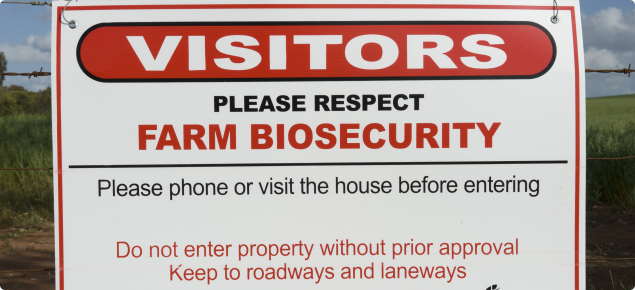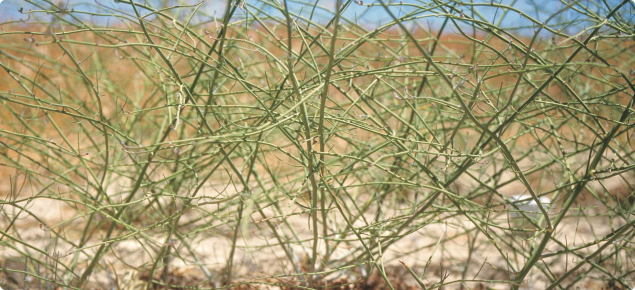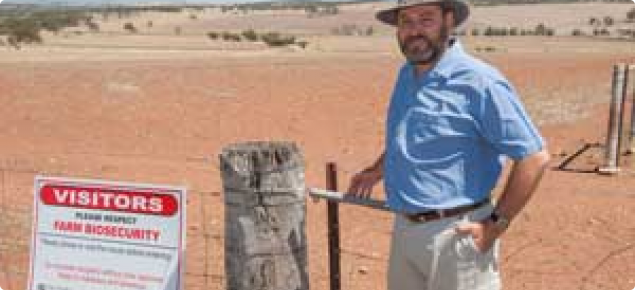Introduction
Plants may be ”declared” as pests under Western Australian legislation. If a plant is declared, landowners/occupiers and other persons are obliged to control that plant on their properties. Declaration specifies a category, or categories, for each plant according to the control strategies or objectives which are considered to be appropriate in a particular area.
Among the factors considered in categorising declared plants are:
- the impact of the plant on individuals, agricultural production and the community in general
- whether it is already established in the area
- feasibility and cost of possible control measures.
Declared plants are usually declared under categories, which define the action required. The category may apply to the whole of the State, districts, individual properties or even paddocks. The Western Australian Organism List (WAOL) contains information on the area(s) in which a plant is declared and the control categories to which it has been assigned in WA.
Organism categorisation
Under the Biosecurity and Agriculture Management Act 2007 (BAM Act) organisms, including plants can be categorised as:
Permitted organisms under section 11:
Organisms that are allowed entry into Western Australia.
Prohibited organisms under section 12:
Organisms that are prohibited from entry into Western Australia.
Unlisted organisms under section 14:
If an organism cannot be categorised as either permitted or prohibited the organism will be unlisted.
Declared pest under section 22:
Pests that may be in the state but are under offical containment, control or eradication.
Declared pests can be assigned to a C1, C2 or C3 control category under the Biosecurity and Agriculture Management Regulations 2013. Prohibited organisms can be assigned to a C1 or C2 control category, the control categories are:
C1 Exclusion:
Plants which should be excluded from part or all of Western Australia.
C2 Eradication:
Plants which should be eradicated from part or all of Western Australia.
C3 Management:
Plants that should have some form of management applied that will alleviate the harmful impact of the plant, reduce the numbers or distribution of the plant or prevent or contain the spread of the plant.
Declared plant control handbook sections
The sections of the Declared plant control handbook has been divided up into individual webpage topics. Further information about each topic can be found through the links below.
Collecting samples
When a new plant is discovered in an area that looks like a declared plant for that area, plant identification is important to confirm it's identity and establish a distribution record.
Prepare samples using the the sending specimens for identification method. Ensure that the key identifying components are included where possible such as flowers, fruit, seeds, prickles or thorns. For small plants send the whole plant, for larger plants send a representative sample.
Specimens collected can be sent to either the Pest and Disease Information Service (PaDIS) if you are general public or AGWEST Plant Laboratory if you are a commercial grower.
Methods of weed control
Land managers have several options for controlling most weeds, of which herbicides are only one. In many cases it is more effective to use an appropriate mix of control methods. The combination of more than one control method is known as Integrated Weed Management (IWM). Any combination of the methods would constitute an IWM program. The following topics contain more information:
- Declared plant control table link: a list containing links to descriptions and chemical controls for declared plants and a calendar of operation for declared and other trouble plants.
Chemical control links
Chemical control of declared plants: a landing page for chemical control of declared plants. It contains links to APVMA minor use permits that can be used on declared plants.
- Herbicides: a general guide to the types of herbicides available and when and how they should be utalised.
- Herbicide resistance: a guide to herbicide resistance, the inherited ability of individual plants to survive herbicide application.
- Herbicide application: information on different types of methods to apply herbicides.
- Herbicide application for declared plants: further methods of herbicide application that can be used for declared plants.
- Spray-topping declared plants: a method of herbicide application combining cultural and chemical control.
- Spray-grazing declared plants: a method of herbicide application combining cultural and chemical control.
- Declared plant calibration of spray equipment: how to calculate the correct rate of herbicide to be applied.
- Herbicide application legal aspects: how to avoid spray drift and legal aspects of herbicide application.
- Herbicide safety: herbicide first aid, toxicity, storage, handling, protective clothing and disposal.
Cultural, physical and mechanical control link
- Cultural control of declared plants: cultural, physical and mechanical methods of weed control that you can use on your properties.
Biological control link
- Biological control for declared plants: biological control agents for declared plants in Western Australia.
Aquatic weed control link
- Aquatic weed control: what you need to know about controlling aquatic weeds on your property.




